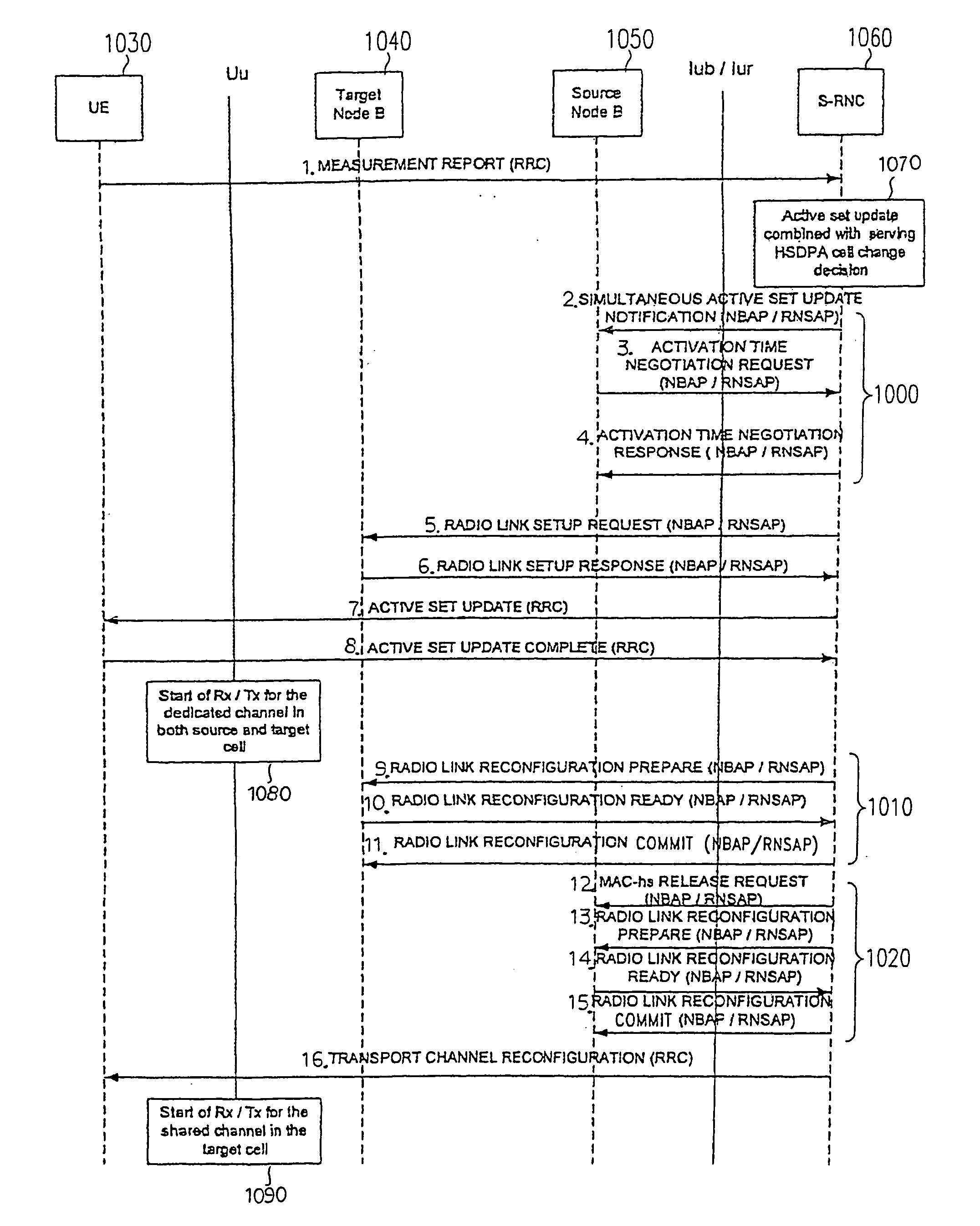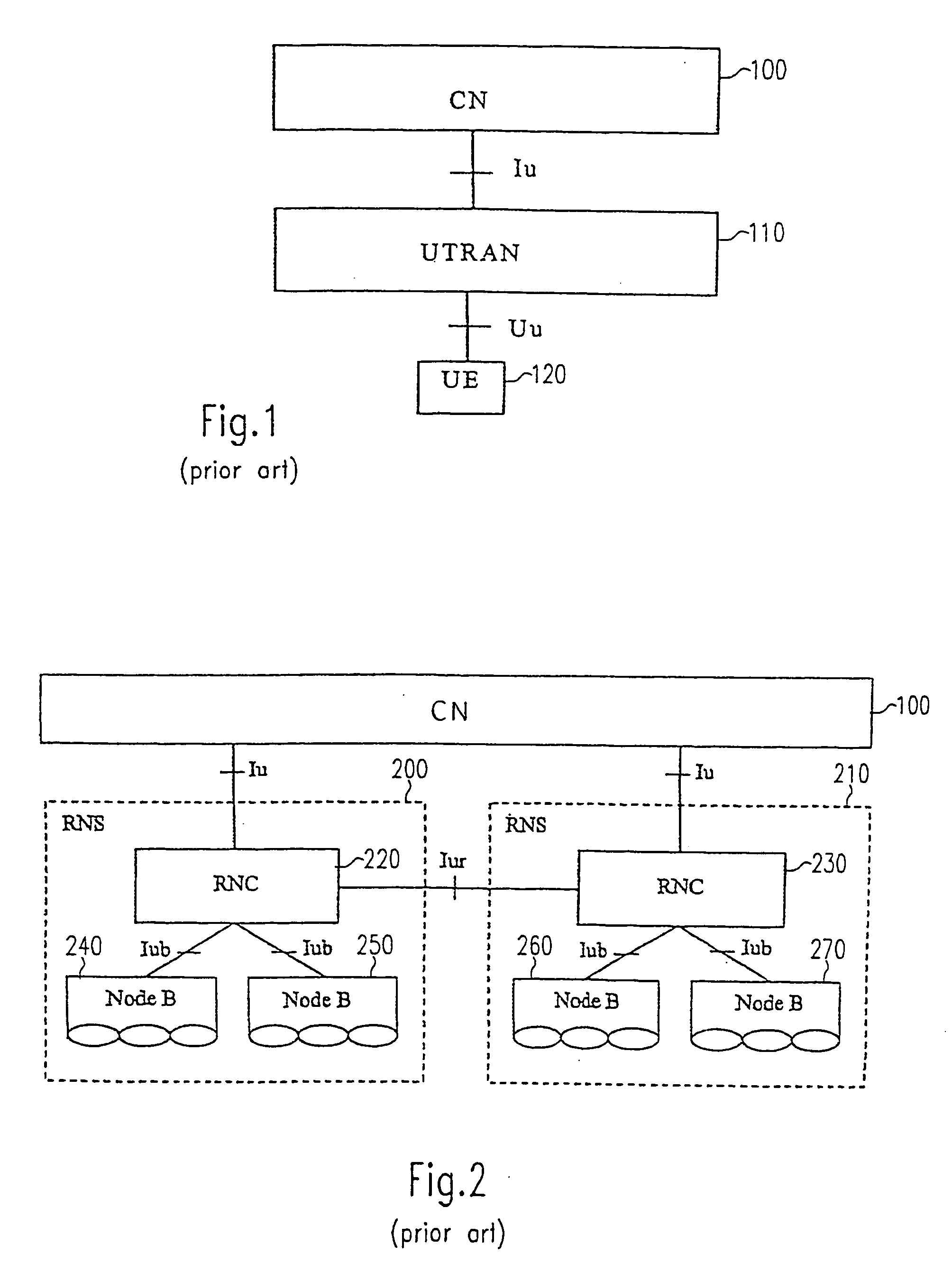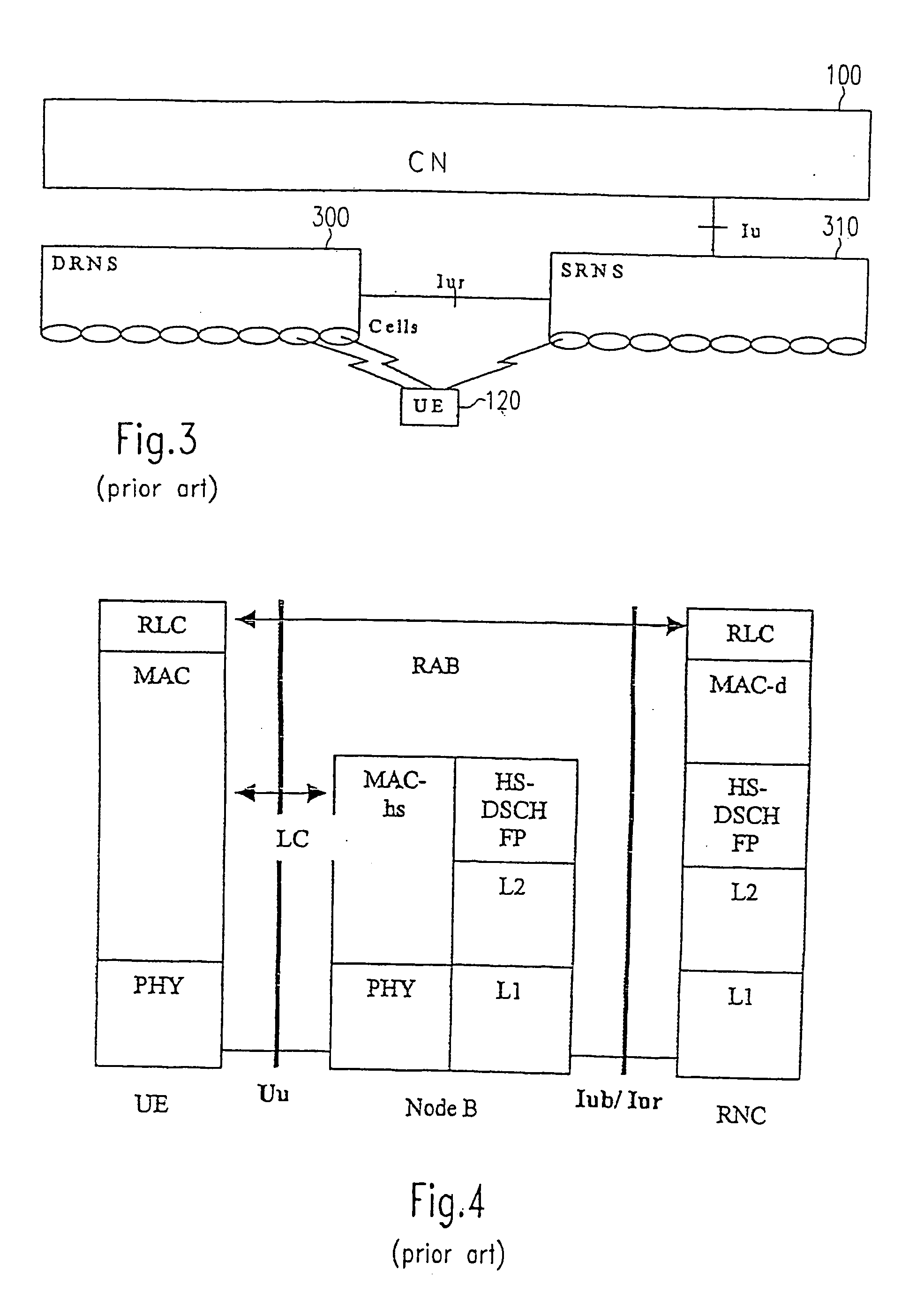Method for cell modification in mobile communication system
a mobile communication system and cell technology, applied in the field of cell conversion method in radio resource management, can solve the problems of pilot signal strength hysteresis, burden of scheduling operation for all nodes b, and require extremely tight timing
- Summary
- Abstract
- Description
- Claims
- Application Information
AI Technical Summary
Benefits of technology
Problems solved by technology
Method used
Image
Examples
Embodiment Construction
[0070] Embodiments of the present invention will be described below with reference to the accompanying drawings.
[0071] Before discussing in more detail the protocol context preservation according the invention, an HSDPA architecture will first be described with reference to FIGS. 7 to 9, in which the invention may be used.
[0072] First, with reference to FIG. 7, the UE HSDPA architecture is explained. It can be noted that each HARQ process 700, 705, 710 is assigned a certain amount of soft buffer memory for combining the bits of the packets from outstanding retransmissions. Once a packet is received successfully, it is forwarded to the reordering buffer 720, 730, 740 providing the in-sequence delivery to the RLC sublayer. According to this architecture, the reordering queue may be tied to a specific priority.
[0073] It should be noted that the available soft buffer size may depend on UE radio access capability parameters such as those described in 3GPP TSG RAN, “Physical Layer Aspe...
PUM
 Login to View More
Login to View More Abstract
Description
Claims
Application Information
 Login to View More
Login to View More - R&D
- Intellectual Property
- Life Sciences
- Materials
- Tech Scout
- Unparalleled Data Quality
- Higher Quality Content
- 60% Fewer Hallucinations
Browse by: Latest US Patents, China's latest patents, Technical Efficacy Thesaurus, Application Domain, Technology Topic, Popular Technical Reports.
© 2025 PatSnap. All rights reserved.Legal|Privacy policy|Modern Slavery Act Transparency Statement|Sitemap|About US| Contact US: help@patsnap.com



